Dora Wings' 1/48 scale
Republic P-47D
Bubbletop
Thunderbolt
by Roland Sachsenhofer
|
Republic P-47D Bubbletop Thunderbolt
|

With its distinctive appearance, the P-47 Thunderbolt is one of the best known aircraft of the Second World War. The recognition value of a P-47 is indeed high; it is determined by a technical design to which the superior flight performance of the Thunderbolt can be traced.While the bulky nose can be quickly attributed to the installation of the well-known Pratt & Whitney R-2800 engine, the real secret of the P-47 lies behind the bulky underside of the fuselage and the unusual design as a mid-wing aircraft.
An exhaust-driven turbocharger installed underneath the wing spars supplied the enormous R-2800 with sufficient boost pressure even at high altitudes; the hot exhaust gases ejected at the rear lower fuselage section also turned the Thunderbolt into half a jet. The flight performance is correspondingly impressive. While the D-version in its numerous sub-variants already reached speeds of 690 km/h, the later M- and N-variants reached speeds of over 750 km/h, each measured at an altitude of over 9000 metres.

The exhaust gas turbo gave the Thunderbolt excellent performance at high altitudes and would have predestined it for escort missions. However, the experience of the first months of operation in Europe showed that the P-47 lacked the range for missions deep into the continent. Instead, practice revealed another "talent".
As a fighter, the Thunderbolt was successful wherever it could exploit its high speed. Roll rate and manoeuvrability, on the other hand, were not its strong points; here, opponents such as the Bf 109 or Fw 190 proved superior. The ability to carry up to a ton of weapons to the enemy, in addition to an impressive armament of eight 12.7mm calibre machine guns, gave the aircraft a new role as a ground attack aircraft. In the second half of the war, as the front lines moved ever closer to Nazi Germany from all directions, the P-47 was preferred in this role. This is also shown quite well in the history of the unit to which the prototype of my model belonged.
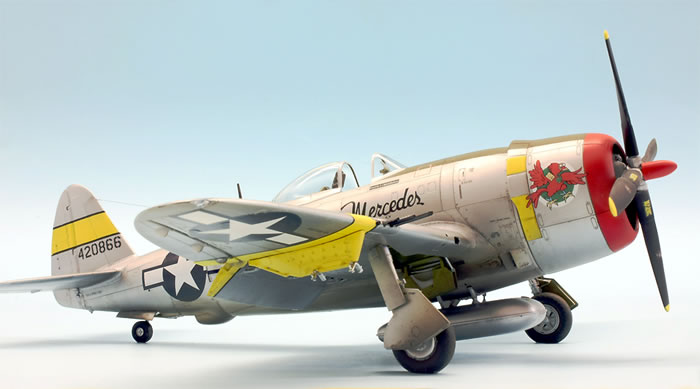
Founded in 1941, the 57th FG and its squadrons, which included the 65th FS "Fighting Cocks", moved to Africa in July 1942. There the squadron participated intensively in the battles in North Africa and over the Mediterranean, and was also involved in the battles around El Alamein and in the Allied landing on Sicily.
Until then the units flew P-40s, but from 1944 they were converted to P-47 Thunderbolts. Afterwards, the 65th FS was transferred to Corsica. From the Alto base, the pilots flew daily combat missions, which were to lead them, following the course of the front, mainly to central and northern Italy. From Corsica, the group's P-47s also supported the major landing operations to conquer southern France. In early 1945, they were transferred to Grosseto, Italy, from where they flew deep attack missions towards northern Italy, the Brenner Pass and into Austria until the end of the war.
My model shows a P-47D of the 65th FS flown by Francis J. Middleton as it was deployed from Alto and later from Grosseto. The squadron emblem of the 65th, the "fighting cock", is emblazoned on the engine cowling, as on all aircraft of the unit. What makes this Thunderbolt truly unique, however, is its double designation as "Schmaltzie" and "Mercedes". Although it would be interesting to know who the names refer to and how this came about, I was unfortunately unable to find out.
Construction and Painting |
The decals for this attractive and interesting aircraft come from the Kagero publication "SMI Library 07: Thunderbolt in the USAAF MTO, Asia and Pacific". For the project itself I used the for good reason quite well known and really extremely comfortable to build kit from Tamiya.
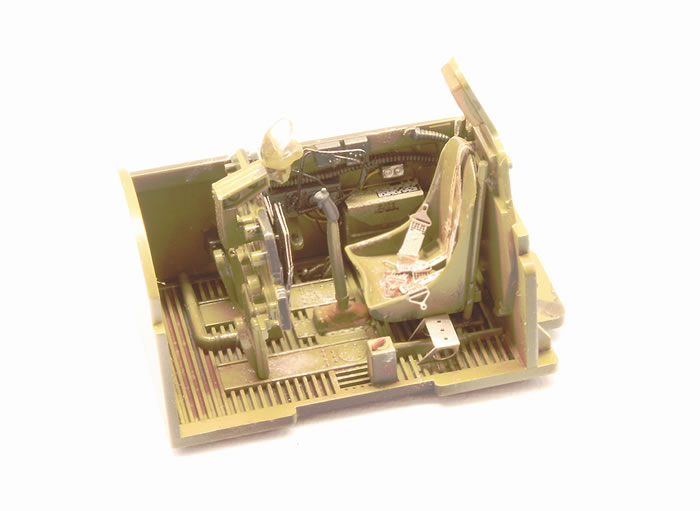
More or less built out of the box, only the harness and the instrument panel were completed with Eduard scratched parts. In my zeal I had also acquired a set of brass MG barrels in preparation for the project. However, a timely look at the corresponding kit parts would have prevented this. These are of delicate fineness and precision and would therefore have been quite sufficient to represent the hollow barrels.
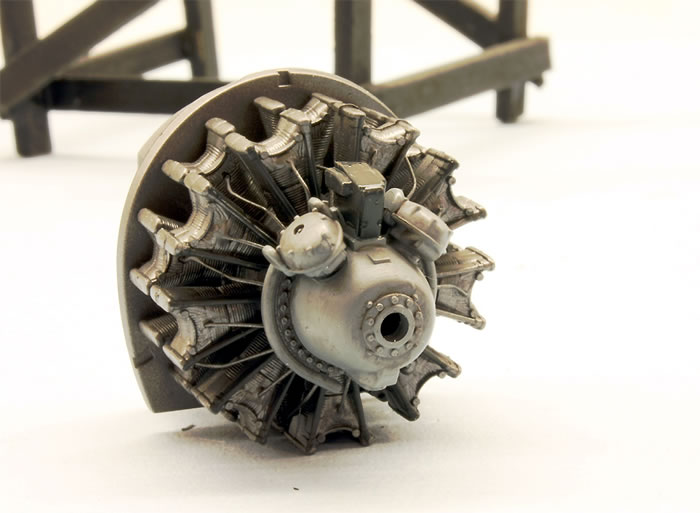
The build itself, as already indicated, was comfortable, problem-free and reasonably speedy, so that I was soon able to get down to the colouring. I may point out the combination of painted yellow areas with black decal stripes depicted borders. This worked excellently, I can only recommend this approach for similar tasks.
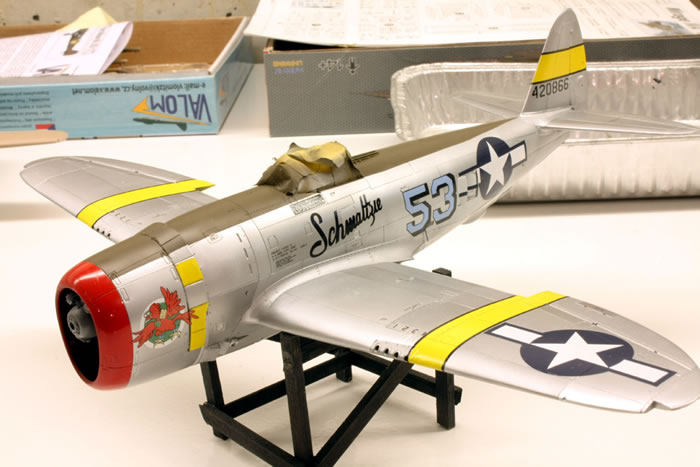
The metal surfaces of the P-47 were represented with different metal tones of Alclad. The finished NMF surfaces were then sealed with acrylic clearcoat from Gunze, which, as usual, worked very well as a primer for applying the decals. "Washing" and ageing were largely done with pastel chalk.
I really enjoyed the build and it did me good, because after a few rather challenging projects such a comfortable kit brought enough joy and motivation for further things.
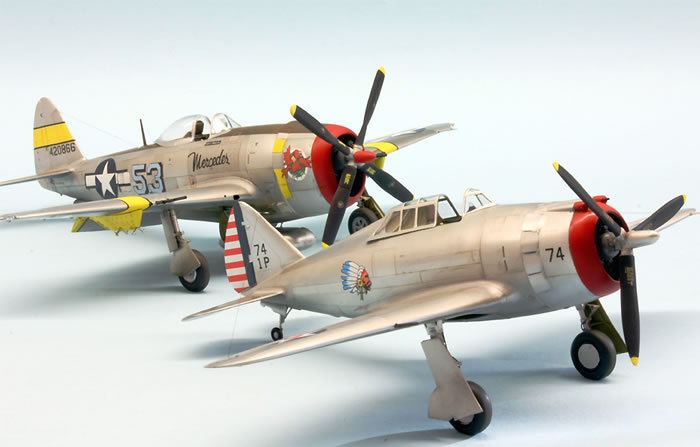
Speaking of "what's next": right after completion another Tamiya Thunderbolt found its way into my kit storage - the Tamiya P-47 has really taken my fancy!
If you are interested in the building process, please have a look here on Scalemates:
https://www.scalemates.com/profiles/mate.php?id=10148&p=albums&album=64894
As ever, remarks will be appreciated: ro.sachsenhofer@gmx.at
Model, Images and Text Copyright ©
2021 by Roland Sachsenhofer
Page Created 16 February, 2021
Last Updated
16 February, 2021
Back to HyperScale Main Page

|
Home
| What's New | Features | Gallery | Reviews | Reference | Resource Guides | Forum |